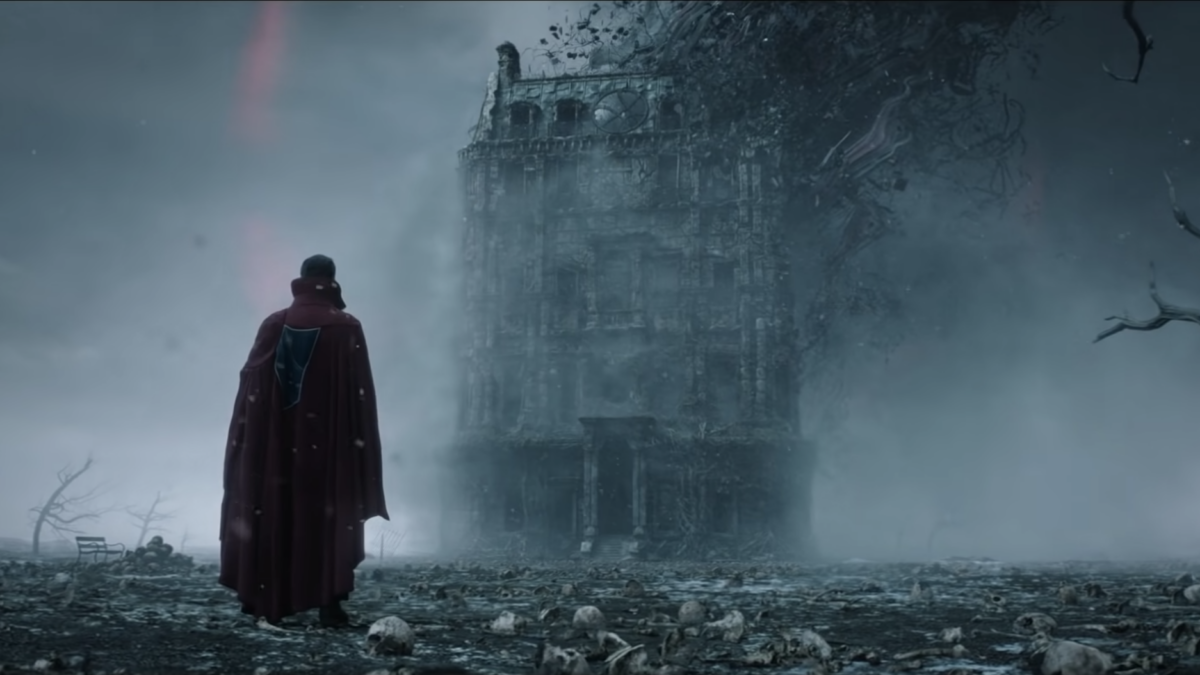The character Dr. Stephen Strange, currently being portrayed onscreen by Benedict Cumberbatch, was always an odd fit for a Marvel Comic. Unlike the patriotic Captain America, who was geared toward the “greatest generation” and their still patriotic children who had not yet morphed into the anti-Americanism faction of the Vietnam era, and the angsty Spiderman, who appealed to teenage nerds, Strange solely appealed to the then-emerging counter-culture.
Created in 1963 by Steve Ditko, not the self-promoting Stan Lee, it is apparent why the character was a head trip for hippie enthusiasts reveling in psychedelic drug culture and mystical mumbo jumbo.
Ironically, Ditko was worlds away from the casual immorality and collectivist-minded counter-culture. Politically, he was a rock-steady Ayn Rand enthusiast, pledged to property rights and what today would be called social conservatism, seeing the world in starkest black and brightest white. He wouldn’t vote for then-candidate George W. Bush in 2000 for not being conservative enough.
It is understandable, however, that the Doctor Strange demographic thought of the character as Marvel’s answer to Timothy Leary. Ditko’s art for Strange often took a surrealist turn, and then collapsed into psychedelic worlds that seemed to jut out of the comic page panels.
The reality, essential to Ditko’s worldview, was fluid and often deceptive, and thus didn’t provide a stable berth to make political and moral stands on. Strange saw himself as simply Earth’s protector against invading demons and sorcerers, upholding an amoral, big government world that Ditko was often at odds with.
In Ditko’s hands, Strange was never really appealing to readers who didn’t use recreational drugs and weren’t awash in I-Ching nonsense. He never really fit into the Cold War culture of patriotic anti-Communism that Captain America, Spiderman, and even the Hulk upheld.
When Ditko very publicly left Marvel Comics, the character lost much of its sting. Strange was shuffled from artist to artist, none of them matching Ditko’s imaginative world-building. Instead, he became little more than a bargain-basement version of Mandrake The Magician.
The dense visions and various realities that Ditko built up weren’t captured by subsequent artists. In the hands of less morally certain writers, Strange had self-doubts and at times wondered if the world he guarded was worth saving. Although the hippie world of the late 1960s and 1970s had finally caught up to him, by then Strange had moments when he thought of hanging up the mystical cloak and resuming the high-priced life of a surgeon.
Strange limped along and then blossomed when writers and artists got it through their heads that the character could take readers into areas Marvel’s more upbeat, but equally flawed characters could not go. Doctor Strange was the closest Marvel got to a horror comic.
The character, a former surgeon, was fleshed out, and as befits many doctors and Phds, was arrogant and saw the society he nevertheless saved once a month as beneath him.
That is the version transferred onscreen. “Doctor Strange in the Multiverse of Madness,” as played by Cumberbatch, is still arrogant — but the actor projects an appealing selflessness. Cumberbatch, an exceedingly intelligent actor, anchors the story with shape-shifting villains and realities that threaten to collapse his performance and the storyline under its special effects weight.
As with Cumberbatch, Elizabeth Olsen’s turn as the Scarlet Witch gives audiences a platform from which to follow the story and its dizzyingly special effects. Without the pair on screen, nothing is as its seems, and the viewer is left scratching their heads as to what is real and what is not.
As directed by Sam Raimi, who cut his teeth on horror movies, “In The Multiverse” is the scariest Marvel yet. It is also a tribute to Ditko, showing that his daring and imaginative vision, drawn nearly 60 years ago, is just now achievable through CGI.









